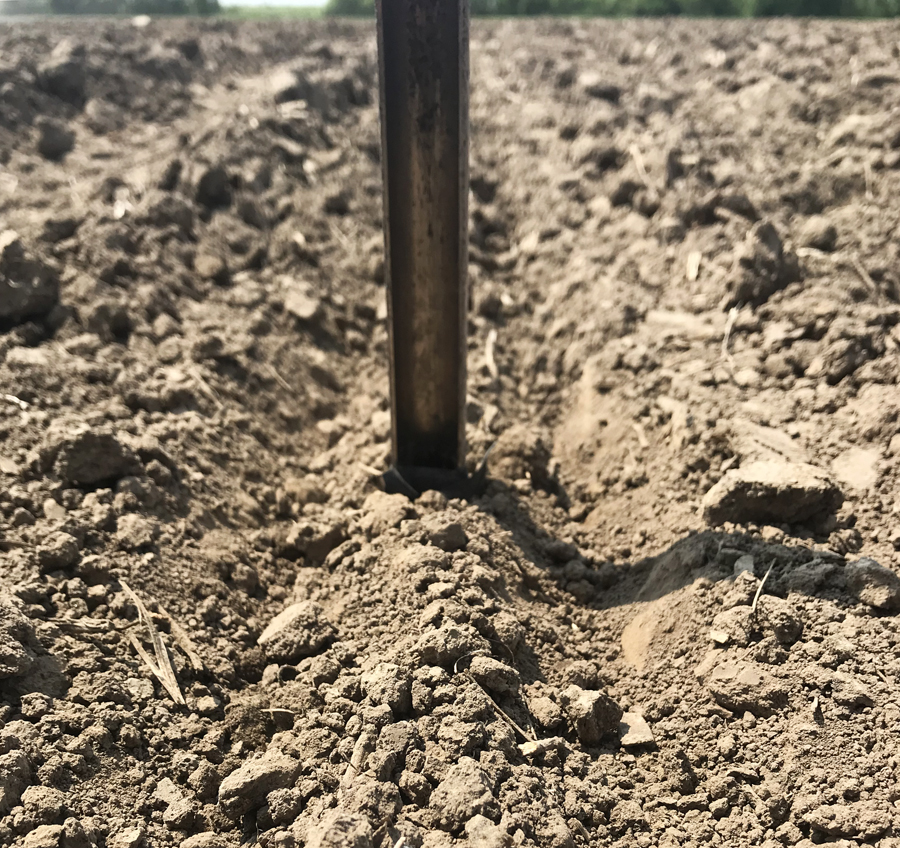There isn’t a simple answer to this complex question – but my research hopes to shed some light on this important subject.
The key to answering this question starts with understanding that all soils, microbes, and fertilizers are unique. Different farms – or even areas within a farm – may have different situations. Interactions between these soils, microbes, and fertilizers vary greatly. They are influenced by soil type, the native microbe populations that are already present, and the fertilizer amounts, placement, and the formulations that are applied.
These interactions make fertilization more complex than it might seem. It’s not just a matter of applying fertilizer to the soil, letting the plant grow, and everything works great. Even if nutrients are in the soil, they may not be available to the plant.

There are interactions among soils, microbes, fertilizers, and plants roots in various combinations. Recent technological advances have given scientists better tools to research these questions. These tools also help us know more about the soil ecosystems that support our production of food.
My work involves studying soil, soil microbes and fertilizer in the area where the plant absorbs nutrients – the root zone.
When we think about agricultural fertilizer applications, most people connect those nutrients only to improved plant growth. However, these nutrients are available to all organisms in the soil system, including the microbes. While the soil microbes use fertilized nutrients, they also play a big role in getting nutrients into plants, so my research has looked further into this micro world.
Soils are complex ecosystems that are dynamic and that adapt to their environment. The situation in a certain farm location can change from spring planting to fall harvest. This is true for all ecosystems whether in a farmer’s field or a temperate forest. For example, trees adapt to the changes in seasons. So, in addition to the challenge of the vast diversity of microbes that are present, microbe community dynamics also change over time. This is independent of any fertilizer applications, with forests being the best example.

How does intensive fertilization impact the numbers and activities of native microbes in our soils? A common perspective is that fertilizer applications have a negative effect on soil microbes. This could either be by inhibiting the growth of or killing the microbial populations. It’s only a theory, and it’s only recently that we’ve been able to research this question better.
Advances in technology have resulted in better measurement of both total microbial biomass and in identifying the specific microbial families and species present. In our work we obtain soil samples from the fertilized root zone only. This helps us be very specific in our measurements. We focus measurements on where the plant is actively growing. We then analyze the sample for total microbial biomass. This helps determine if fertilizers or other agriculture inputs impact the microbes.
Looking at the total microbial biomass doesn’t help us know how soil microbe communities are changing, or if they are changing. For example, fertilizer application of nitrogen may decrease the number of nitrogen-fixing bacteria in a sample. However, at the same time the fertilizer application could increase the total amount of microbes involved in degrading crop residues.

Knowing the quantity of specific microbes can help us understand what impact these microbes have on the soils. However, knowing these specifics is costly and time-consuming. Rather than measure the specific microbes, our research measures the enzymes that these microbes produce. Measuring enzymes – which are made of proteins – can also help us understand what is happening in our soils. Enzymes are also used to measure soil health, so we can better understand fertilizer impacts on both microbes and as an indication of soil health.
Our research here at the University of Illinois Urbana-Champaign is ongoing. Our hope is to learn more about how soil microbes at the micro level of the root zone can influence our ability to grow food and feed the world. In our research, we have observed that fertilizer applications increase enzyme activities related to nutrient cycling. This greater enzyme activity can be compared to the total microbial biomass. We could find that fertilizers promote microbial growth and activity as opposed to killing the microbes or decreasing their activity. Greater enzyme activity and microbial biomass, indicators of good soil health, can benefit from fertilizer which shows that fertilizer can also build healthy soils.
Connor N. Sible, University of Illinois at Urbana-Champaign
To receive notices about future blogs, be sure to subscribe to Soils Matter by clicking on the Follow button on the upper right! Explore more on our webpage About Soils. There you will find more information about Soil Basics, Community Gardens, Green Infrastructure, Green Roofs, Soil Contaminants, materials for Teachers and more.

Interesting. Would this be similar results in the second year? Could it possibly be that the microbes are producing higher levels of enzymes because they are dying? I have seen plenty of research showing reduction in microbe numbers following chemical fertilizer application. If you look at the root structures in the great plains around you, you’ll find the difference between synthetic and organic systems are profound. What are your current theories of causation? Just that the microorganisms are actually eating and thriving on these synthetic fertilizers?
Thank you for the research, genuinely interested in your response!
Hi Connor, please corresond with the author at his institution for these more scientific questions. Thanks svf
Anxiously awaiting your results!